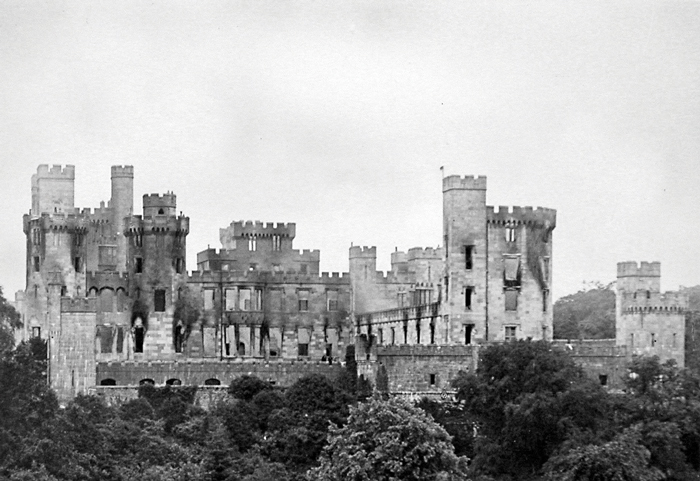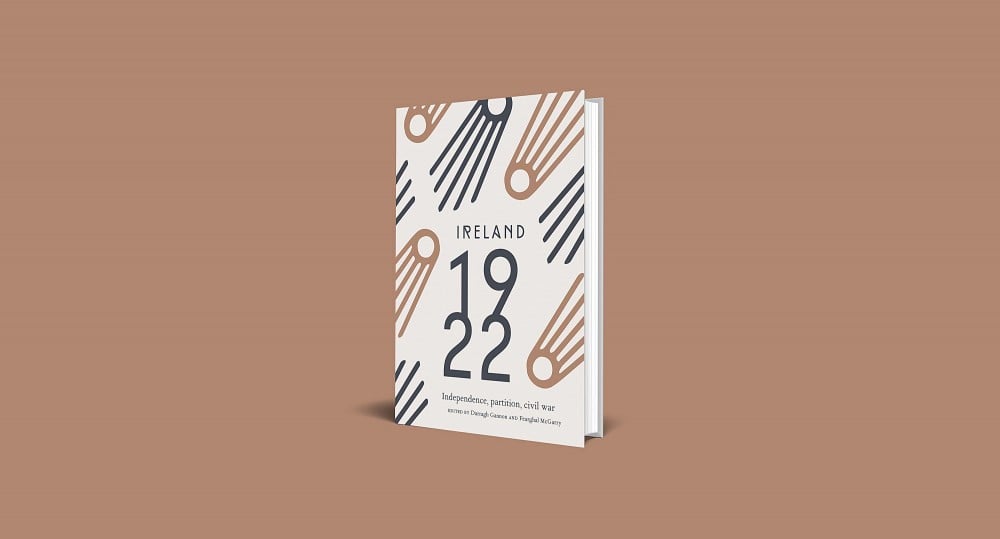13 August 1922: The Destruction of Mitchelstown Castle
The Irish Revolution and Country House Burnings
By Terence Dooley
On 13 August 1922 Mitchelstown Castle in Cork became the largest Irish country house to be destroyed during the civil war. Early histories of the War of Independence and civil war in Ireland make no reference to this event, and little mention of the burning of around 300 Irish country houses, here defined as the (former) residences of Irish landlords. Nor, indeed, was serious consideration given to a related issue, the growth in agrarian disorder.¹ While it can legitimately be argued that the foremost desire of revolutionaries was to secure Ireland’s sovereignty, sight should not be lost of the fact that the chaos of the 1920–23 period created local conditions in which republicans and agrarian activists, often one and the same, staged their own micro-revolutions that had ulterior social ambitions, most notably the redistribution of lands. Case studies of country house burnings can be useful in elucidating this.²
Less than two months before, on the evening of 29 June 1922, Mitchelstown Castle was commandeered by anti-treatyite forces led by Commandant Patrick Luddy, a farmer’s son from Coolyregan, who, during the War of Independence, had been an officer in the Mitchelstown Battalion of the IRA.³ The castle was an ideal billet to accommodate his men, while its strategic location provided a sweeping view of the town and surrounding countryside. To Luddy, the castle was also a symbol of alien culture; as a youth he had been reared on fireside stories of how ‘the men and women of the Mitchelstown district took strong and active steps to ensure that the landlord’s men were effectively dealt with’, and years after its destruction, he is said to have boasted about his role in the burning, ‘that he was avenging centuries of landlordism and English occupation, as well as erasing what little was left of the Kingston presence in Mitchelstown’.⁴ Thus, his memory ascribed the motivation not to the wanton destruction that characterises civil wars, or any grand military scheme, but to historical grievances located in the expropriation of lands by colonial usurpers; it was an important myth to justify the return of these lands to native ownership.
Mitchelstown Castle was no different from most of the other houses burned during 1920–23, when motivations were web-like in their complexities, rooted in the historical past as well as the revolutionary present. In this case, Mitchelstown Castle represented a very significant site of ancestral grievance: on 9 September 1887 three civilians were shot by the RIC during a nationalist demonstration—‘the Mitchelstown massacre’—organised in opposition to William Downes Webber’s estate-management policy. Col. Alex King-Harman, who inherited the estate in 1924, reflected on the memory of this event and the role of his ancestor: ‘The disasters here [in 1922] were inevitable. I think, at the time, there was great bitterness… He put it in the position where people wanted to burn down the castle.’⁵
The bulk of the Webber (formerly Kingston) estate had long been sold by 1922, but the neo-Gothic extravaganza was still surrounded by hundreds of acres of demesne and untenanted lands, much of it prime agricultural land. The burning of the castle dissuaded King-Harman from ever returning; his solicitor claimed: ‘The social standing of the district had been entirely changed in the rebellion and he said he would not come to live there.’⁶ King-Harman had, therefore, no option but to sell his lands to the Irish Land Commission, which he eventually did in 1936, and Patrick Luddy was one of the allottees who received a farm, rewarded by the Fianna Fáil government for his role in the War of Independence.⁷ This was certainly not unusual. Since the passing of the 1923 Land Act, the rhetoric and reality of land redistribution had been a major catalyst in the change from disorder to order. The act legislated for the compulsory acquisition of lands, targeting the former landed elite, but that was diplomatically tempered by offering payment in land bonds, it was not expropriation. Simultaneously, the process threatened to punish those who stood against the state by denying them access to land in redistribution schemes, while also holding out the prospect of reward to loyal supporters.⁸ This is a dimension of the Irish revolution that can only be understood if we look well beyond 1923, but to do so, and to fully comprehend the Irish revolution in all its complexities, access must be provided to the Irish Land Commission files to allow scholars to examine post-independence redistribution schemes systematically.
The story of Mitchelstown Castle also reveals the extent of country house looting. Before and after the burning, eyewitnesses described men and women dragging furniture from the house, ‘putting stuff behind trees and bushes’, while the newly established Civic Guard used warrants to search several premises in the town where valuable silver pieces were recovered.⁹ The paintings were not recovered, but, in 1957, Sir Cecil King-Harman received a letter from a native of Limerick informing him that 41 paintings had been sold at Sotheby’s in London for almost £101,000; the author believed, ‘in the light of information given to him by one of the castle’s Republican garrison in 1922’, that they had come from Mitchelstown Castle.¹⁰ In 2000 Bill Power controversially claimed that before the burning some of the paintings had been ‘taken away by a Republican lawyer for his personal pleasure and advantage’.¹¹ While looting is part and parcel of warfare, and may be regarded as another step in the despoilment of the coloniser’s residence, it is also driven by ambitions of personal enrichment.
In the wider national context, looting and a multitude of other crimes had become so widespread by August 1923 that the Irish Free State government introduced a Public Safety (Emergency Powers) Act. This worked in tandem with the 1923 Land Act and the Damage to Property (Compensation) Act of May 1923 to coerce and conciliate; a strategy very familiar in rural Ireland. The latter provided for compensation, appeasing the British government, but frustrating the country-house owners who generally regarded awards as inadequate and punitive. For example, in the case of contents stolen, an owner had to prove that thieves had been acting ‘on behalf of any combination or conspiracy for the overthrow of the Provisional Government’. During the Mitchelstown Castle compensation hearing, Judge Kenny concluded that the looting had been carried out by ‘ordinary thieves’, not members of the anti-Treaty forces.¹² Neither was the government in a position, even if it had the desire, to compensate country house owners on the levels claimed.¹³ Judge Kenny awarded £27,500, a fraction of the £149,000 claimed for Mitchelstown. The minister for finance ‘made it plain’ to King-Harman ‘that he would not grant full restoration compensation, that it was absurd to rebuild such a vast house in those days’.¹⁴ King-Harman invested the award in building seventeen houses in the Dublin suburbs, altering the urban landscape. The Cistercian monks of Mount Melleray in County Waterford used the salvage of the castle to build a new abbey, while in the 1940s Mitchelstown Co-operative Agricultural Society built a milk-processing factory on the site of the castle ruins. Both abbey and co-op were symbols of the newly imagined independent Ireland, while their construction meant that the symbol of the old colonial order was completely erased from the physical and cultural landscape.
Extracted from Ireland 1922 edited by Darragh Gannon and Fearghal McGarry and published by the Royal Irish Academy with support from the Department of Tourism, Culture, Arts, Gaeltacht, Sport and Media under the Decade of Centenaries 2012-2023 programme. Click here to view more articles in this series, or click the image below to visit the RIA website for more information.






















